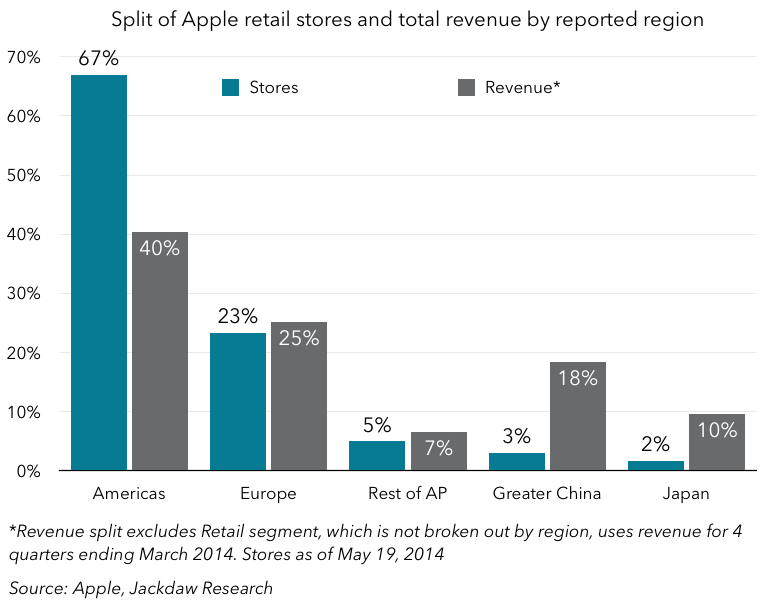As we gear up for Google I/O next week, and imagine what we might see from Google there, I wanted to have one last look at Apple’s WWDC, from a slight different perspective. One of the thoughts about WWDC that’s taken a while to percolate for me is that WWDC was a good sign that, from a product perspective at least, Apple is doubling down on mature, developed markets, rather than joining the land rush in emerging markets.
HomeKit and HealthKit are about solving first-world problems
I wrote about HealthKit and HomeKit in a couple of previous pieces here and on Techpinions. I think they’re both much-needed solutions to real problems in the health and fitness and home automation categories. But these are in some ways the very definition of first world problems. Trying to get your smart lock, your smart lightbulb and your smart thermostat to talk to each other is a challenge experienced only by people who can afford to buy the overpriced products on offer in these markets.
HealthKit also comes into its own in part when tying together several different fitness tracking devices, which is another first-world phenomenon. There is, though, another element to HealthKit, which is about access to medical data from various healthcare providers. But again, this is something of a mature-market issue. A recent data set from Opera Mediaworks highlighted the disconnect between mature and emerging markets when it comes to searching for health related information on mobile devices:

Though Maslow never anticipated either of these developments when developing his famous hierarchy of needs, it’s fair to say they’d both be somewhere near the top.
This continues a longer-term trend at Apple
Financial analysts have been clamoring for Apple to be more aggressive about targeting emerging markets for some time now. The C in the iPhone 5C was widely rumored to stand for either “cheap” or “China” but of course turned out not to make a big difference either in bringing iPhone prices down or making the product more relevant for the Chinese market. It simply replaced the role previously played by last year’s model in the iPhone device lineup, at the same price point and with similar specs.
The Beats acquisition can also be seen as mature market focused, with a focus on high-priced headphones and a paid-for subscription music service, which at around $10 per month isn’t going to be a fit for most people in emerging markets. As the pundits continue to call for Apple to expand its addressable market by lowering prices and specs, it continues to signal that it’s more interested in staying at the premium end of the market, which means a focus primarily on mature markets too. Apple’s addressable market in every product category has always been a minority slice of the total, but it tends to dominate that slice, and seems to see no need to change.
Apple’s focus in emerging markets is on distribution
None of this is to say that Apple is ignoring emerging markets entirely, but its strategy there seems to be focused on distribution rather than products. It’s not even on features within products, on either the hardware or software side – none of the features announced in the last several years either in iOS or in iPhone hardware appear to have been designed with emerging markets in mind.
On the other hand, Apple’s emerging markets strategy continues to be focused on distribution, with a combination of broadening carrier relationships and expanding its own network of retail stores. The China Mobile deal signed a few months ago is a huge part of how Apple will better address the Chinese market, and will take a couple of years to have its full impact. But Apple is also planning to triple the number of retail stores it has in China, which makes sense given the mismatch between where its revenues come from and where it has stores today:
Carrier relationships for the iPhone and retail stores for the full product set are key to distribution for Apple, and it’s investing heavily there in China, and to some extent in other countries. Along with China, Apple opened its first stores in Brazil and Turkey in the last few months.
Where’s the growth in mature markets?
The obvious flaw in this strategy is that there is very little market growth in Apple’s major product categories – smartphones, tablets and PCs – in mature markets. So how will Apple grow? I think the answer lies in increasing conversions from other platforms. Apple’s share of smartphone sales in many markets remains well under 50%, and its share of the installed base remains low too. In markets such as Spain, Apple’s share has begun creeping up from very low levels over the last few quarters as the economy begins to recover, and in the US its share of the smartphone base has risen steadily from under 30% in 2010 to over 40% today. There is considerably headroom for further growth, and figures on loyalty rates on the two major platforms suggest there should be a decent rate of migration from Android to iOS over time.
I see both HomeKit and HealthKit as ways for Apple to increase the value of the iPhone ecosystem, and thus the attractiveness of the iPhone versus other platforms. A future Apple wearable (or two) would add further to this appeal, and help the effort even more. But it marks out a clear difference in the strategy of some of the major players in this market, as Google, Facebook and others go aggressively after emerging markets with new products and features, while Apple cements is position in mature markets. It will be very interesting to watch Google I/O next week with this in mind.
